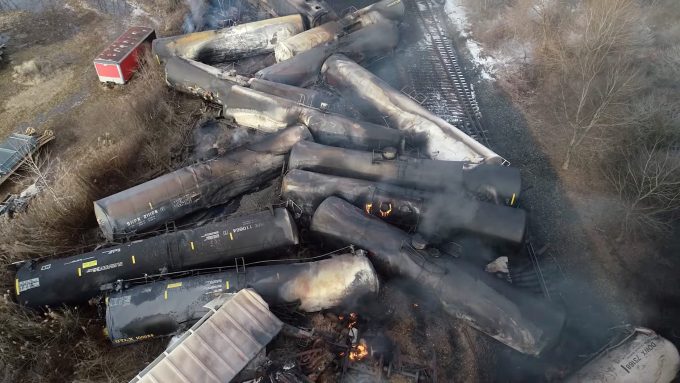Russia said to be sending incendiary devices in European parcels
European logistics companies have been warned that “unconventional incendiary devices” are being sent via freight ...

As US National Transportation Safety Board (NTSB) members gather in East Palestine, Ohio, today to discuss their findings in the Norfolk Southern (NS) derailment case, exceptionally long trains – a cornerstone of precision scheduled railroading (PSR) – have come under attack in a recent scientific paper.
The February 2023 derailment in East Palestine caused 38 cars to spill consignments of vinyl chloride, ethylene glycol monobutyl ether, ethyl-hexyl acrylate and other toxic chemicals into local soil and waterways, prompting the evacuation of ...
Semiconductors could compensate for air freight's lost ecommerce traffic
'It’s healthy competition' Maersk tells forwarders bidding for same business
Transpacific sees first major MSC blanks as rates fall and volumes falter
'Weakened' Maersk paying a heavy price for its lack of fleet growth
US shippers slam USTR port fee plan – 'an apocalypse for trade'
Opposition builds for final hearing on US plan to tax Chinese box ship calls
Despite sourcing shifts, 'don't write-off China', says CMA CGM CCO

Comment on this article